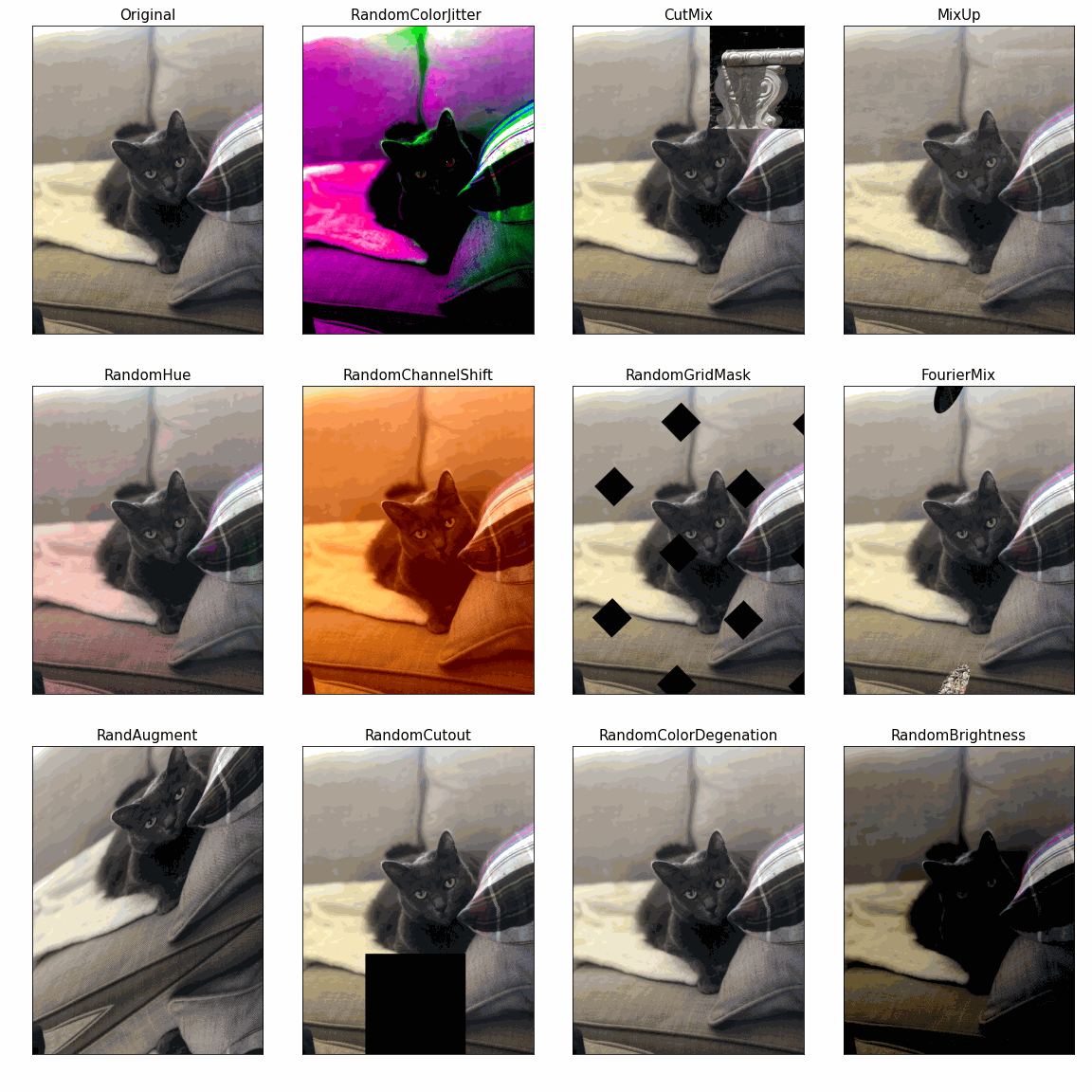KerasCV
- Original Link : https://keras.io/keras_cv/
- Last Checked at : 2024-11-19
KerasCV is a library of modular computer vision components that work natively with TensorFlow, JAX, or PyTorch. Built on Keras 3, these models, layers, metrics, callbacks, etc., can be trained and serialized in any framework and re-used in another without costly migrations.
KerasCV can be understood as a horizontal extension of the Keras API: the components are new first-party Keras objects that are too specialized to be added to core Keras. They receive the same level of polish and backwards compatibility guarantees as the core Keras API, and they are maintained by the Keras team.
Our APIs assist in common computer vision tasks such as data augmentation, classification, object detection, segmentation, image generation, and more. Applied computer vision engineers can leverage KerasCV to quickly assemble production-grade, state-of-the-art training and inference pipelines for all of these common tasks.

Quick Links
Installation
KerasCV supports both Keras 2 and Keras 3. We recommend Keras 3 for all new users, as it enables using KerasCV models and layers with JAX, TensorFlow and PyTorch.
Keras 2 Installation
To install the latest KerasCV release with Keras 2, simply run:
pip install --upgrade keras-cv tensorflowKeras 3 Installation
There are currently two ways to install Keras 3 with KerasCV. To install the stable versions of KerasCV and Keras 3, you should install Keras 3 after installing KerasCV. This is a temporary step while TensorFlow is pinned to Keras 2, and will no longer be necessary after TensorFlow 2.16.
pip install --upgrade keras-cv tensorflow
pip install --upgrade kerasTo install the latest changes nightly for KerasCV and Keras, you can use our nightly package.
pip install --upgrade keras-cv-nightly tf-nightlyNote: Keras 3 will not function with TensorFlow 2.14 or earlier.
See Getting started with Keras for more information on installing Keras generally and compatibility with different frameworks.
Quickstart
import os
os.environ["KERAS_BACKEND"] = "tensorflow" # Or "jax" or "torch"!
import tensorflow as tf
import keras_cv
import tensorflow_datasets as tfds
import keras
# Create a preprocessing pipeline with augmentations
BATCH_SIZE = 16
NUM_CLASSES = 3
augmenter = keras_cv.layers.Augmenter(
[
keras_cv.layers.RandomFlip(),
keras_cv.layers.RandAugment(value_range=(0, 255)),
keras_cv.layers.CutMix(),
],
)
def preprocess_data(images, labels, augment=False):
labels = tf.one_hot(labels, NUM_CLASSES)
inputs = {"images": images, "labels": labels}
outputs = inputs
if augment:
outputs = augmenter(outputs)
return outputs['images'], outputs['labels']
train_dataset, test_dataset = tfds.load(
'rock_paper_scissors',
as_supervised=True,
split=['train', 'test'],
)
train_dataset = train_dataset.batch(BATCH_SIZE).map(
lambda x, y: preprocess_data(x, y, augment=True),
num_parallel_calls=tf.data.AUTOTUNE).prefetch(
tf.data.AUTOTUNE)
test_dataset = test_dataset.batch(BATCH_SIZE).map(
preprocess_data, num_parallel_calls=tf.data.AUTOTUNE).prefetch(
tf.data.AUTOTUNE)
# Create a model using a pretrained backbone
backbone = keras_cv.models.EfficientNetV2Backbone.from_preset(
"efficientnetv2_b0_imagenet"
)
model = keras_cv.models.ImageClassifier(
backbone=backbone,
num_classes=NUM_CLASSES,
activation="softmax",
)
model.compile(
loss='categorical_crossentropy',
optimizer=keras.optimizers.Adam(learning_rate=1e-5),
metrics=['accuracy']
)
# Train your model
model.fit(
train_dataset,
validation_data=test_dataset,
epochs=8,
)Disclaimer
KerasCV provides access to pre-trained models via the keras_cv.models API. These pre-trained models are provided on an “as is” basis, without warranties or conditions of any kind. The following underlying models are provided by third parties, and are subject to separate licenses: StableDiffusion, Vision Transformer
Citing KerasCV
If KerasCV helps your research, we appreciate your citations. Here is the BibTeX entry:
@misc{wood2022kerascv,
title={KerasCV},
author={Wood, Luke and Tan, Zhenyu and Stenbit, Ian and Bischof, Jonathan and Zhu, Scott and Chollet, Fran\c{c}ois and Sreepathihalli, Divyashree and Sampath, Ramesh and others},
year={2022},
howpublished={\url{https://github.com/keras-team/keras-cv}},
}